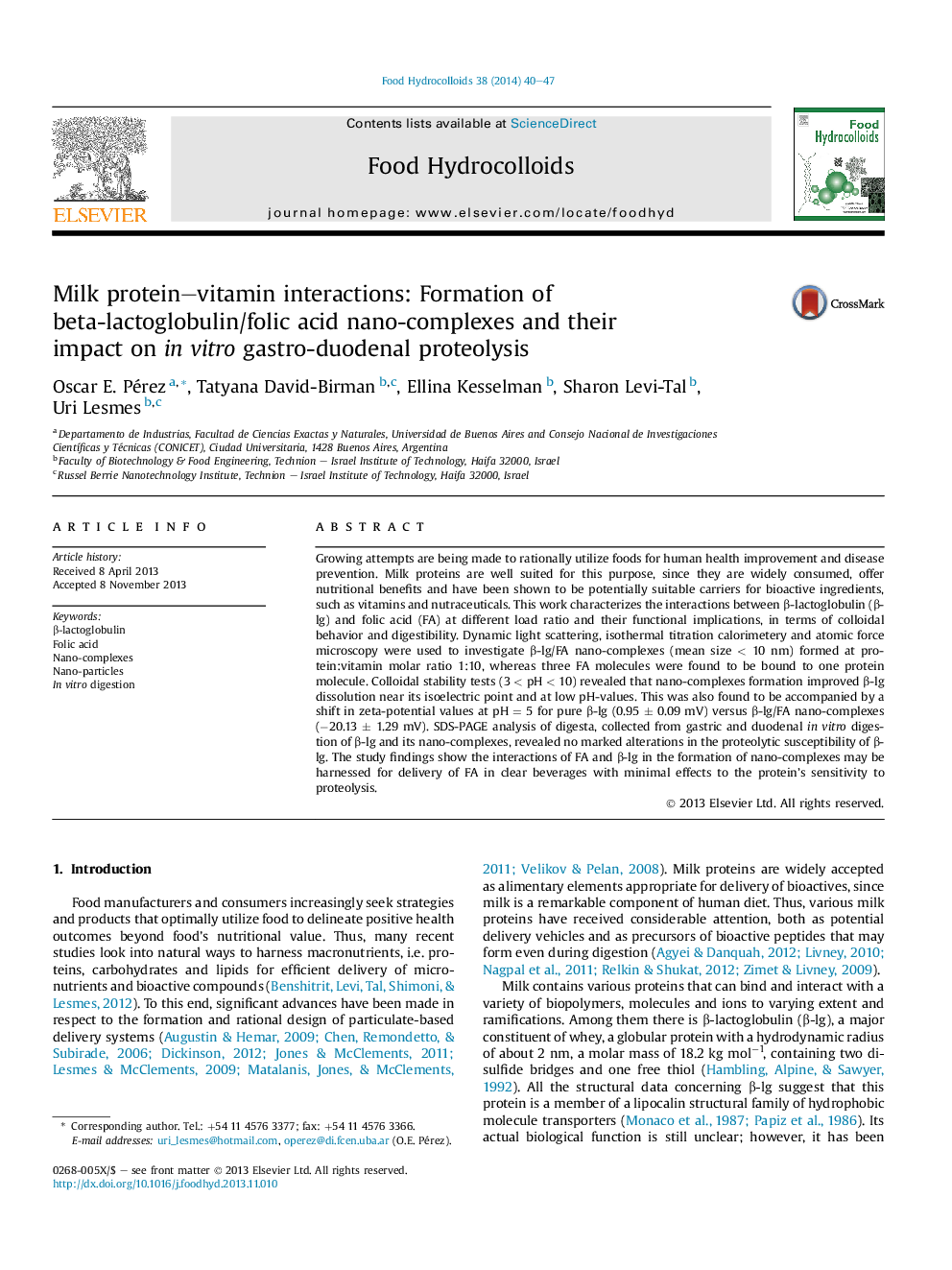| Article ID | Journal | Published Year | Pages | File Type |
|---|---|---|---|---|
| 604494 | Food Hydrocolloids | 2014 | 8 Pages |
•ITC, DLS and AFM elucidate colloidal properties of β-lactoglobulin and folic acid nano-complexes.•Complexation improved protein pH-responsiveness and its dissolution near its pI.•Complexation did not markedly affect in vitro gastric and duodenal proteolysis.
Growing attempts are being made to rationally utilize foods for human health improvement and disease prevention. Milk proteins are well suited for this purpose, since they are widely consumed, offer nutritional benefits and have been shown to be potentially suitable carriers for bioactive ingredients, such as vitamins and nutraceuticals. This work characterizes the interactions between β-lactoglobulin (β-lg) and folic acid (FA) at different load ratio and their functional implications, in terms of colloidal behavior and digestibility. Dynamic light scattering, isothermal titration calorimetery and atomic force microscopy were used to investigate β-lg/FA nano-complexes (mean size < 10 nm) formed at protein:vitamin molar ratio 1:10, whereas three FA molecules were found to be bound to one protein molecule. Colloidal stability tests (3 < pH < 10) revealed that nano-complexes formation improved β-lg dissolution near its isoelectric point and at low pH-values. This was also found to be accompanied by a shift in zeta-potential values at pH = 5 for pure β-lg (0.95 ± 0.09 mV) versus β-lg/FA nano-complexes (−20.13 ± 1.29 mV). SDS-PAGE analysis of digesta, collected from gastric and duodenal in vitro digestion of β-lg and its nano-complexes, revealed no marked alterations in the proteolytic susceptibility of β-lg. The study findings show the interactions of FA and β-lg in the formation of nano-complexes may be harnessed for delivery of FA in clear beverages with minimal effects to the protein's sensitivity to proteolysis.
Graphical abstractFigure optionsDownload full-size imageDownload as PowerPoint slide
